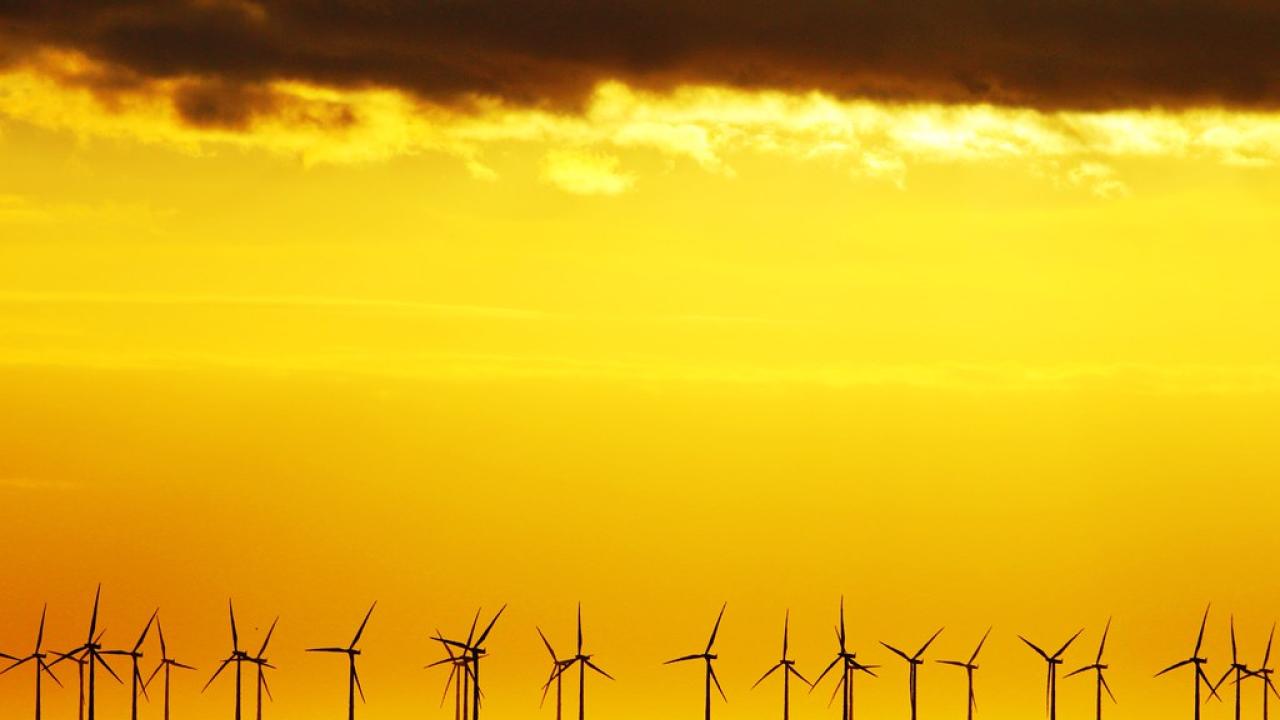
With rising gas prices, war, and the incredibly pressing need to rapidly transition away from burning fossil fuels, new ways of storing energy are getting a lot of attention. Batteries are a key puzzle piece in that transition. That's where a workshop organized by ICTP condensed matter scientists Nicola Seriani and Ralph Gebauer comes in. "This workshop addresses very timely issues," says Seriani, "with the use of electrical devices and renewable energy growing. This growth entails some challenges, including technological challenges, which of course, conceal underneath scientific challenges." Those basic science challenges are the focus of this workshop, with applications open until 20 April.
Entitled "Workshop on Electrochemical Energy Storage: Theory, Experiments, and Applications," the workshop gathers both theoreticians and experimentalists to dive into one of the main challenges of switching to renewable energy. "There are two aspects of it," explains Gebauer. "One is energy conversion, meaning taking a clean source, like sun or wind, and transforming it into a usable form of energy, like electricity. This is what is called energy conversion. The other aspect is the storage of that energy."Batteries are the most common and well-known way of storing energy, but size and available materials restrict how useful current technology can be.
"My feeling is that the field of energy conversion is in very good shape," says Gebauer. "Renewable energy sources like photovoltaic energy from the sun, electricity from the wind, they are absolutely at competitive prices right now. And if things stopped there, we wouldn't even be talking anymore about energy dependence. The real problem is that they are intermittent sources." In other words, the sun sets, and wind does not blow continuously, making it hard draw directly from these sources for a constant source of energy. "We need better ways to store energy such that it can be used at other times and in other places," says Gebauer. "This is where something really needs to be improved."
The challenges of energy storage are not only about technology, but about the basic science that underlies the technology. Seriani and Gebauer, as well as the workshop, focus on this basic science aspect. "Our workshop gathers both theoreticians doing simulations, like Ralph and I do, and experimentalists," says Seriani. "We try to develop an atomistic understanding, a fundamental understanding of what is happening, and we get to collaborate with experimentalists also doing basic science investigations."
The need for improvement in energy storage is quite an active field of research, following two main lines of study: one focusing on batteries and new types of batteries. The other line of research is chemical energy storage, or storing energy in the form of chemical bonds, as green fuels. "Alternative battery chemistries are becoming viable now economically," says Gebauer, "as well as from a performance point of view." Chemical storage is a way of storing energy for longer periods, not just at night. Green societies will need seasonal storage, from transforming renewable energy into chemicals, materials which can then be very easily transported in huge quantities. "This area is also making big progress," says Gebauer.
"A lot of people make devices and measure their performance, but we wanted to focus on understanding what's happening behind the performance," says Gebauer. "This is where the scientific challenges come: understanding the standard processes in and between the materials, especially at the interfaces between these materials."
One of Seriani's research lines is in lithium air batteries, which aims at increasing the energy density of the battery. In this case, the lithium reacts with oxygen, taking heavy transition metals out of the equation, which contribute a lot to the mass of a battery. "The problem is the kinetics of this process is very slow, so we're trying to understand how the oxide forms, and how it decomposes. You have different problems depending on the combination of items and materials," explains Seriani. "But with new battery approaches like this, it's possible the energy density can be increased by about a factor of 10 over conventional batteries.
In energy storage, an increase of the factor of ten is huge. "In computing, there's Moore's law," says Gebauer, "where every so many months performance doubles. There's no such thing for batteries and energy storage, there are limits. And it's not only about energy density, it's also about the power density," Gebauer explains.
"Energy storage is really the bottleneck, and a lot of people are looking into that bottleneck," Gebauer say. This workshop, focusing on the basic science of batteries, hopes to contribute to getting past that bottleneck and into a powerful, efficient renewable energy future.
----- Kelsey Calhoun
















